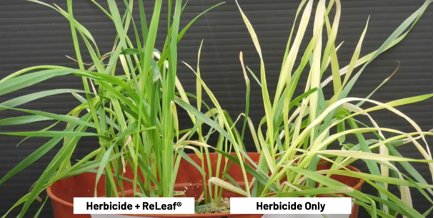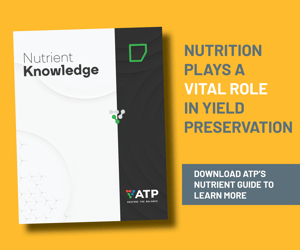Save your crop from a “Herbicide Hangover”
Written on 05/13/2021

Herbicide applications are more common than not these days, and for good reason – weed competition can have a huge impact on crop health and yield.
But getting rid of those pesky weeds using a herbicide can run a toll on the crop – especially if it’s already under stress. It’s this combination of environmental, nutritional, and herbicide stress that leads to a “herbicide hangover”.
Fortunately, there are some steps that can be taken to mitigate a “herbicide hangover” and retain the genetic potential of the crop.
Spoiler alert – unlike hangovers in humans, the solution is not a generous dose of Tylenol and Gatorade.
What is a “herbicide hangover”?
After a herbicide application, a herbicide-tolerant plant will metabolize the herbicide. This process requires energy - and a lot of it.
All of the energy a plant needs to break down a herbicide is generated through photosynthesis.
If the nutrients required for photosynthesis are limited, photosynthetic efficiency will be compromised, and the plant will not have enough energy to metabolize the herbicide. This results in damage to the leaves – commonly known as flashing.
If severe enough, this flashing can cause irreparable damage to the photosynthetic machinery resulting in further impact to the plant’s energy production and eventually yield.
Additionally, because the plant is devoting most of its energy to metabolizing the herbicide, a stall in overall plant growth is often observed.
These flashing and stalling symptoms are what make up a “herbicide hangover”.
How nutritional stress impacts “herbicide hangover”
When we think about stress, environmental stress is usually top of mind: too little moisture or too much moisture; cold temperatures or hot temperatures; wind; hail; etc – these stresses can have a big impact on plant respiration and photosynthesis.
In these stressful conditions, this reduced photosynthetic efficiency and energy production in turn impacts the development of the seedling’s root architecture and mass. Less roots mean lower ability to acquire moisture and nutrients which can lead to a nutrient deficiency.
If these are the conditions when the crop is subjected to a herbicide application; now instead of devoting the little energy it has on generating more roots for moisture and nutrient acquisition or more photosynthetic tissue for energy production, the energy is spent metabolizing the herbicide. Hence why we see seedling stall.
How to prevent a “herbicide hangover”
Ensuring the crop is nutritionally balanced can reduce the severity of herbicide flash and lessen the seedling stall.
By supplying the crop with essential nutrients required for photosynthesis and plant growth such as Nitrogen, Phosphorus, Potassium, Magnesium, Sulphur, Zinc, Manganese, Iron, and Boron – the effects of a herbicide stress can be lessened.
The addition of a biostimulant can also help the crop bounce back after a herbicide application.
Biostimulants help to reduce the plant response to environmental stress, nutritional stress, and herbicide stress. They keep the plant from shutting down, allowing it to continue to photosynthesize, and therefore reduce the impact of herbicide stress symptoms on the crop’s energy production and yield.
How to implement on your farm
On paper, this probably makes a lot of sense. But practically and logistically, it likely sounds very difficult to source and mix all these nutrients and biostimulants in the correct amount and specific for the needs of each of your crops.
ATP produces “ready to go” formulations that are specifically designed for each crop to meet the nutritional needs of the crop at herbicide timing and help overcome these stresses.
This product is called ReLeaf. It combines macro and micronutrients, in the right form and ratio, with two novel biostimulants. It contains the essential nutrient package to drive rooting and photosynthesis, to improve overall plant health.
ReLeaf is designed to go right into the tank and is compatible with most* herbicides, meaning no extra passes are required.
*Before tank-mixing ReLeaf with an ag chemistry product, ensure you check whether it is compatible. Visit atpnutritionag.com to check ReLeaf compatibility.
Watch the video to learn more about how to fix herbicide injury:
More about ATP
At ATP, we believe a proactive, science-based approach to restore the balance between plant and soil health is the single most effective way to deliver the genetic potential of the crop. We challenge the status quo by utilizing ag tech to monitor and drive productivity.
We strive to make the complex world of nutrition more simple and easy to manage.
If you want to learn more about proactive plant nutrition, download our Nutrient Knowledge Guide:



Leave a reply